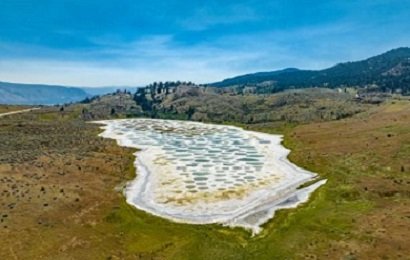See the African Lake that Turns Animals into Stone
Do you know there is an African Lake which is Alkaline in nature that turns animals into stones? Yes, this lake exist somewhere in Africa, and is deemed one of the world’s deadliest, must be terrifying for the most animals, but not for flamingos. We all know about the Greek monster Medusa, whose deadly gaze turned men to stone. That’s a legend, but a natural wonder in Africa today does just that. We take you to Northern Tanzania, a unique inland lake turns wildlife to stone.

Lake Natron as the lake is known is a salt lake in the Arusha Region in Tanzania. The lake is within the lake Natron basin. It is in the Gregory Rift, which is the eastern branch of the east African rift.
Lake Natron is one of four alkaline lakes in Tanzania. Lake Natron is the famous with a serene atmosphere and also the source of the most phantasmagorical photographs ever captured – images that look as though living animals had instantly turned to stone.
It is a terminal lake that do not drain out to any river or sea; they fed by hot springs and small rivers. As shallow lakes in a hot climate, it temperature can reach as high as 106 degree Fahrenheit! The lake is fed principally by the Southern Ewaso Ng’iro River, which rises in central Kenya, and by mineral-rich hot spring.
What I meant is that water flows in, but doesn’t flow out, so it can only escape by evaporation. Overtime however, as water evaporates, it leaves behind high concentrations of salts and other minerals, like at the Dead Sea and the Utah’s Great Salt Lake in the U.S.A.
The point to note here is that unlike other lakes, Lake Natron is extremely alkaline, due to high amounts of the chemical natron (a mix of sodium carbonate and baking soda) in the water. The water’s pH has been measured as high as 10.5 – nearly as high as ammonia!
So why is LAKE NATRON Unique?
What makes the lake unique is that, it has been reported that the lake turns animals that touch it into “stone”. This sound like folklore or a horror movie script, but it can be true to some extent because of the presence of salt in it.
TRENDING: SEE THE DEADLY SERUM USED BY WOME TO KILL THEIR HUSBANDS IN 17TH CENTURY EUROPE
The lake contains salt, soda, and magnesite deposit. Ol Doinyo Lengai, also known as the Mountain of God, contributes to the lake’s hostile conditions. It is the only active volcano to emit natrocarbonatites – rare carbonatite lava.
Sodium carbonate and other minerals that enter the lake from the surrounding hills make the water alkaline. For the unversed, the deposits of sodium carbonate were apparently once used in the process of Egyptian mummification also.
In this Eastern African Lake, the same process acts as a type of preservative for those animals who lost their lives in its waters.
The lake turns animals that comes near it waters to STIONE! It also possesses a bright red colour, which acts as warning signal, cautioning most life forms to stay away. The lake gets this reddish hue from salt-loving microorganism called halophiles that thrives in its alkaline waters and produce reddish pigments, which colour the lake’s salt crust red. The salty crust, however, changes over time, giving the lake a different appearance each time.
Animals that die here can turn into calcified statues over time, because of the unique chemical makeup of the lake, which encrusts the carcasses with layers of salt, sodium carbonates, and sodium bicarbonates.
Hostile to some, thriving to a few
Despite turning animals to stone, the lake still supports life. Infact, Lake Natron’s alkaline waters supports thriving ecosystem of salt marshes, freshwater wetlands, flamingos and other wetland birds, tilapia and algae on which large flocks of flamingos feed.
People have survived the lake’s potency. In 2007, a helicopter carrying a group of wildlife videographers wishing to get footage of the flamingos crashed into the lake. It ended up nose-first in the water. Everyone survived the crash but they were in the water unprotected. It burned their eyes and skins, but they managed to drag themselves ashore. Here, some local people helped them. If they have spent any longer in the lake, they would have died.
Currently, Lake Natron is under threat. The proposed construction of a hydroelectric plant on the Ewaso Ng’iro River and a soda ash plant on its shores threatens the lake’s salinity and the flamingos. While this lake remains deadly, it is still a vital ecosystem.
The lake has been listed on the Ramsar List of Wetlands of international Importance due to its unique biodiversity and has been recognized as an important eco-region by the World Wildlife Fund. This lake will definitely make it to the list of most unique places in the World.
Share this Post: if you think this post can be helpful to somebody else, Please share it using the buttons below!
What's Your Reaction?




















